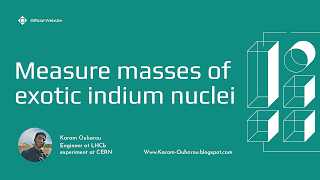Posts
Showing posts from January, 2022
My team at MIT's Laboratory for Nuclear Science and elsewhere have found evidence of X particles in the quark-gluon plasma produced in the Large Hadron Collider (LHC) at CERN
- Get link
- X
- Other Apps
Measure Masses of Exotic Indium Nuclei
- Get link
- X
- Other Apps
Observation of triple J-psi Meson Production
- Get link
- X
- Other Apps


